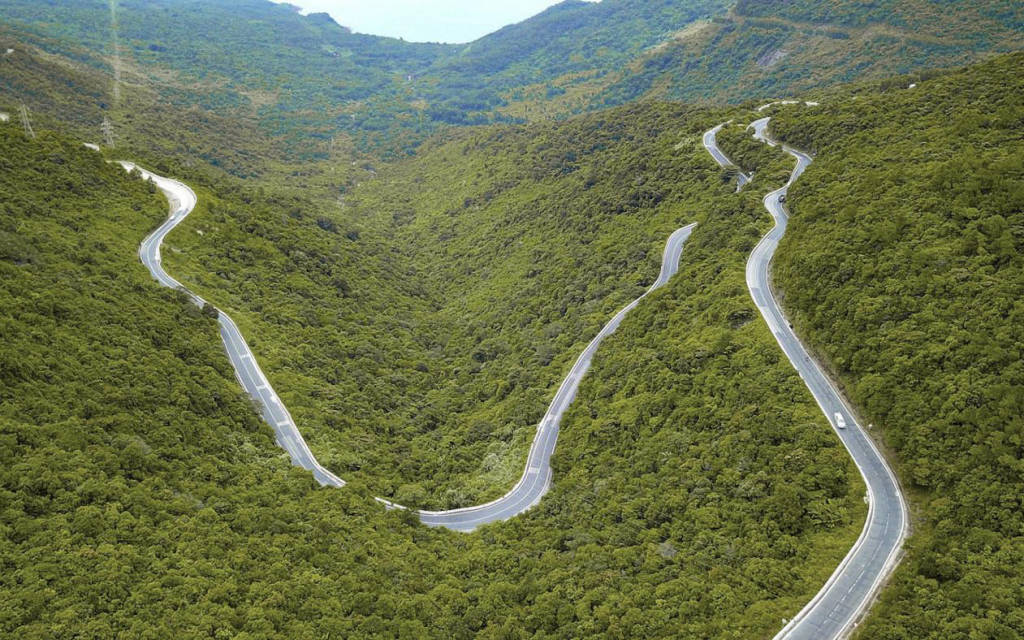Hai Van Pass, also known as Ai Van Pass or Cloud Pass, is one of the famous landmarks of Vietnam. With an elevation of 500 meters above sea level and a length of about 20 kilometers, the pass is located on National Route 1, forming a natural boundary between Thua Thien Hue Province and Da Nang City. Traveling through Hai Van Pass not only offers an exciting journey but also reveals a breathtaking natural landscape.
History
The history of Hai Van Pass is intertwined with many significant events. Before 1306, this land belonged to the Champa Kingdom. After King Che Man of Champa ceded land as a bridal gift to marry Princess Huyen Tran, the pass became the boundary between Dai Viet and Chiem Thanh. In 1402, after the Hồ Dynasty defeated Chiem Thanh, the pass officially came under the control of Dai Ngu.
During the Nguyễn Dynasty, Hai Van Pass continued to serve as the boundary between Thua Thien and Quang Nam. Notably, during the Republic of Vietnam, travel across the pass was strictly monitored through checkpoints to reduce traffic accidents. In 2005, a tunnel through Hai Van Pass was opened, facilitating transportation.
Hai Van Quan Relic
At the summit of the pass, remnants of the Hai Van Quan gate still exist, built during the Trần Dynasty and restored in 1826 during the Nguyễn Dynasty. This is not only a unique architectural site but also a place where King Thành Thái made many royal visits. Additionally, a few bunkers (remnants of Đồn Nhất) built by French forces in 1926 for the strategic protection of the pass still remain, later taken over by American troops. Throughout the two resistance wars against France and America, Hai Van Pass witnessed numerous major battles.
In 2017, Hai Van Quan was recognized as a national relic, highlighting the cultural and historical significance of this place.
Cultural Value
Hai Van Pass is not only historically prominent but also holds deep cultural value. In Vietnamese folk poetry, Hai Van Pass is depicted with poetic imagery, reflecting its ruggedness and mysterious beauty. A folk verse speaks of the pass:
"Evening clouds cover Ai Van,
Birds call from the rocky shores, reflecting my sorrow."
The treacherous terrain of Hai Van is expressed in another line:
"On the road, we fear Hai Van,
By water, we fear the tidal waves of Hang Doi."
The poem ""Late Evening at Hai Van Quan"" by scholar Tran Quy Cap (1870-1908) also captures the patriotic spirit and the natural beauty of the area:
"Majestic heights rise steeply in stone,
Steps familiar where ups and downs are known.
Sorrow fills my eyes, gazing far at sea,
Anger breaks the clouds that encircle me.
In the evening light, the shelter stands alone,
Tired, I hear the chilly woods, the drone.
Seven miles of misty pass, smoke rising high,
Hành Mountain's breath ascends to the sky."
Hai Van Pass is not only a beautiful road with majestic scenery but also a keeper of the distinctive cultural and historical values of the nation. It is truly an unmissable destination for those who love free travel and wish to explore nature’s beauty on their own terms. Come and experience it, to feel the history and natural beauty blend together in this remarkable place!
 Register
RegisterSign in Travel Agent
Sign in Supplier
Sign in Affiliate
Sign in Guru



 Đèo Hải Vân, Đà Nẵng, Việt Nam
Đèo Hải Vân, Đà Nẵng, Việt Nam